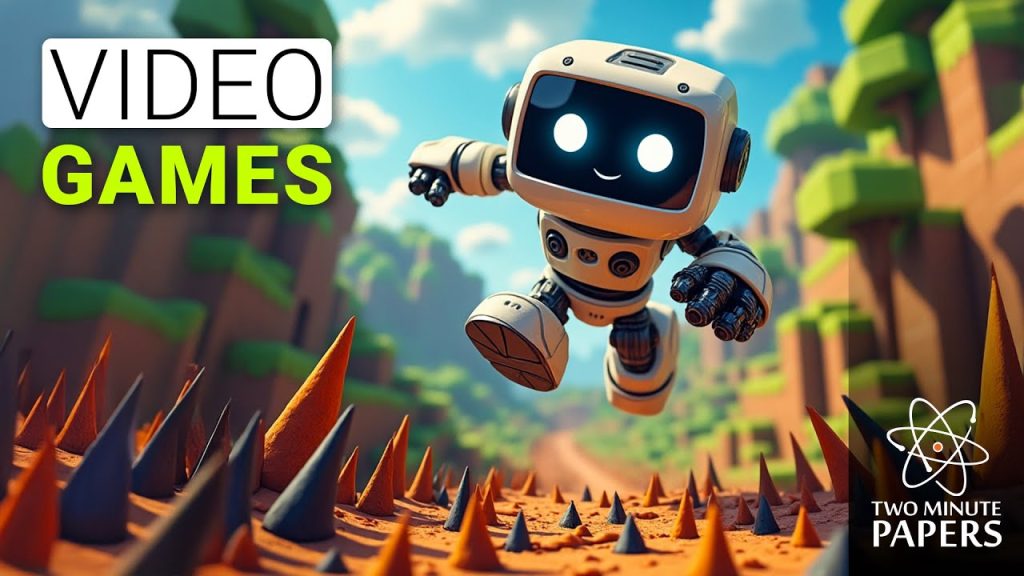AI Evolution From Sentence Completion to Game-Like Mastery

We live in an incredible era of AI advancements. What once started as mere sentence completion has evolved into something extraordinary. Technologies like OpenAI’s GPT-4 are now household names. But the question remains: where do we go from here? And how do video games fit into this puzzle?
This article dives deep into the evolving world of AI, exploring its journey from early versions of GPT to the groundbreaking o1 system. Discover how video games play a crucial role and why reasoning remains a challenging frontier. This is a journey you won’t want to miss.
The Journey from GPT-2 to GPT-4
Years ago, GPT-2 amazed us by simply finishing our sentences. Fast forward to today, and we have GPT-4, which is not just smarter but a full-blown assistant used by millions worldwide. It’s intriguing to think about how far we’ve come and where we might head next.
One might wonder if we’re on the cusp of creating a superintelligent AI. The real kicker is how video games, of all things, play a part in this exciting journey of technological advancement.
The Missing Piece: Reasoning
The key to achieving superintelligence is reasoning, an area where current AI falls short. Take recognizing a mug, for instance. While humans need to see one to understand the concept, AI requires thousands of images to even begin to comprehend what a mug is.
This ability to learn from minimal data is what sets human reasoning apart. It’s also the puzzle piece experts believe is missing in the quest for superintelligent AI.
Video Games as a Learning Ground
Detailed video games can become a playground for AI, offering endless scenarios for learning and exploration. Just imagine AI running through limitless self-driving scenarios or training robots in expansive worlds.
Even before this, AI has shown prowess in games, like mastering Atari’s breakout and Minecraft. It’s clear that reinforcement learning offers AI a captivating method to learn and grow.
In these games, AI learns through trial and error, associating good scores with successful actions. This concept, known as reinforcement learning, is essential in AI’s development and understanding of its environment.
The Rise of the o1 System
OpenAI’s new o1 system is a departure from previous concepts. Unlike GPT-5, it’s a distinct kind of system with promising capabilities.
Where earlier models quickly answered questions, o1 takes its time, mirroring how humans tackle challenging problems. This thoughtful approach boosts accuracy remarkably from 20% to 80%, particularly in complex tasks.
However, simple questions may not see much benefit from this approach. Yet, for intricate puzzles or in-depth market research, the gains are astounding.
Beyond Simple Thinking
The o1 system’s distinct thinking style allows it to delve deep into complex issues like expanding a company in Europe. This thinking isn’t human-like but helps refine tasks such as market entry or financial planning.
It can generate web app codes tailored to specific needs, demonstrating its versatility. Whether it’s adjusting for Microsoft’s Azure cloud or creating user profiles, this AI showcases its utility and adaptability.
Limitations and Lessons
Despite its brilliance, o1 has its limitations. For example, adjusting numbers in trivial tasks can confuse it, revealing it as more of a pattern matcher than a true reasoner.
This discrepancy highlights that, while o1 and similar AI systems excel in data processing, the quest for true reasoning remains unrealized.
The Role of Reinforcement Learning
Reinforcement learning continues to hold promise in AI’s evolutionary journey. By treating AI learning like a video game, actions and outcomes become new training data, driving improvement.
This is similar to how AlphaGo learned to anticipate winning moves, creating better decisions for future games. If AI gets smarter, it enhances its actions, creating a cycle of continuous improvement.
A Step Towards Intelligence
OpenAI’s o1 doesn’t just strive to play games but to achieve genuine intelligence. This foundation allows it to learn from mistakes, laying the groundwork for a more intelligent future AI.
The pace at which AI advances is mind-boggling, constantly improving and eager to solve scholarly challenges. Exciting times lie ahead as this technology evolves faster than ever before.
In conclusion, AI is on an incredible journey. From learning in video game worlds to achieving near-human-like reasoning, the possibilities are endless.
Source: Youtube





